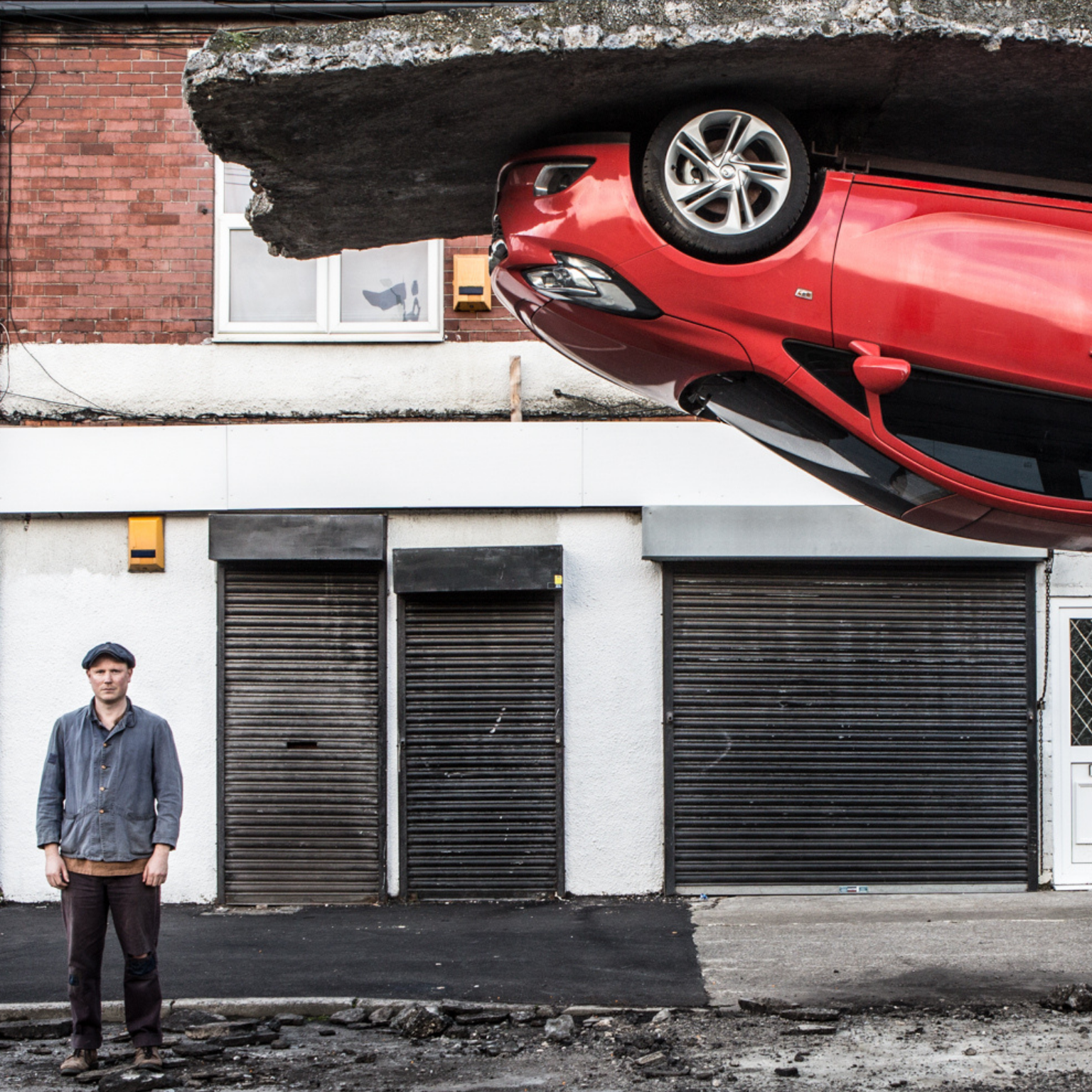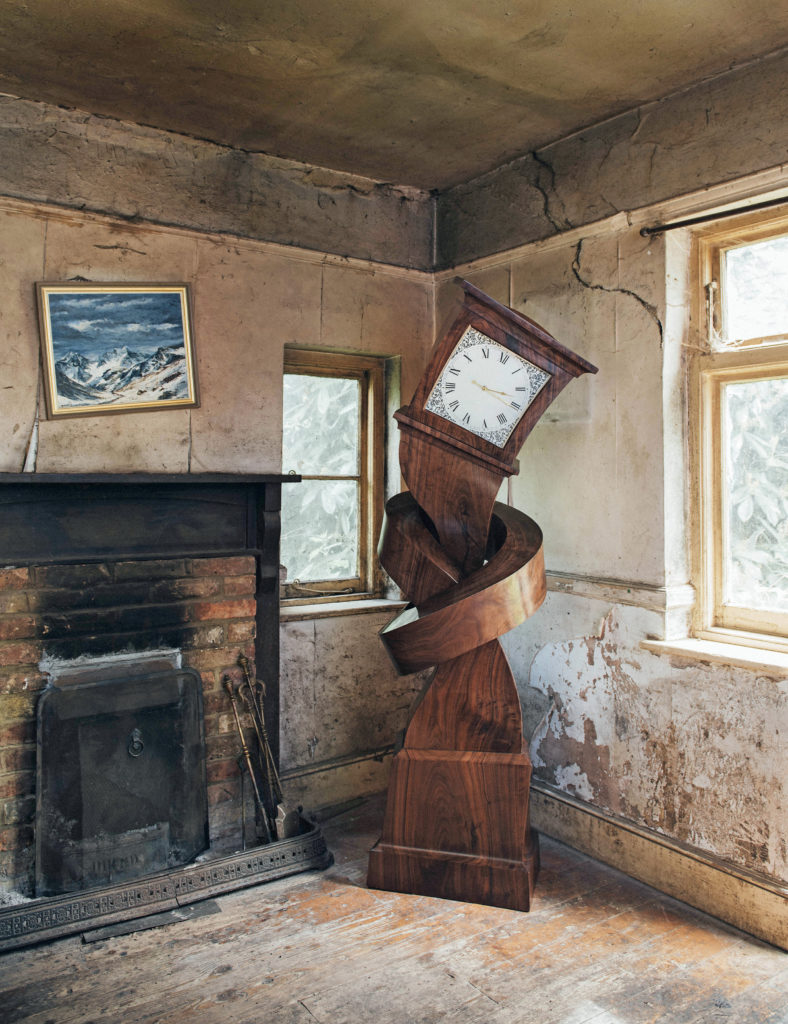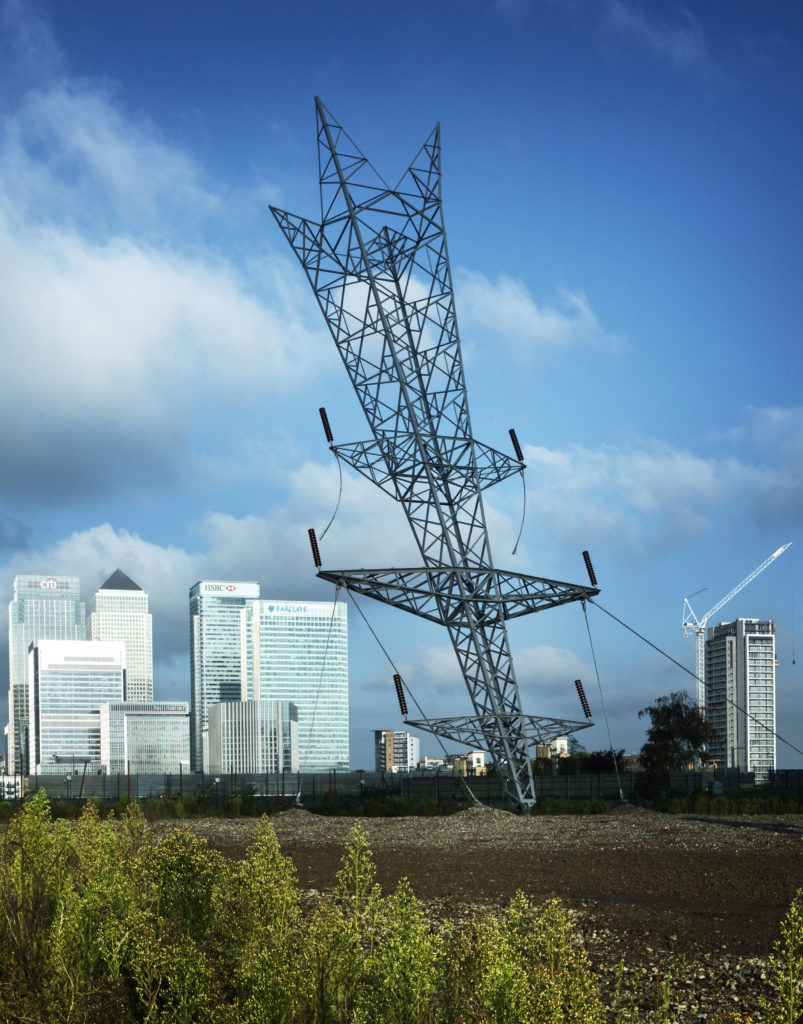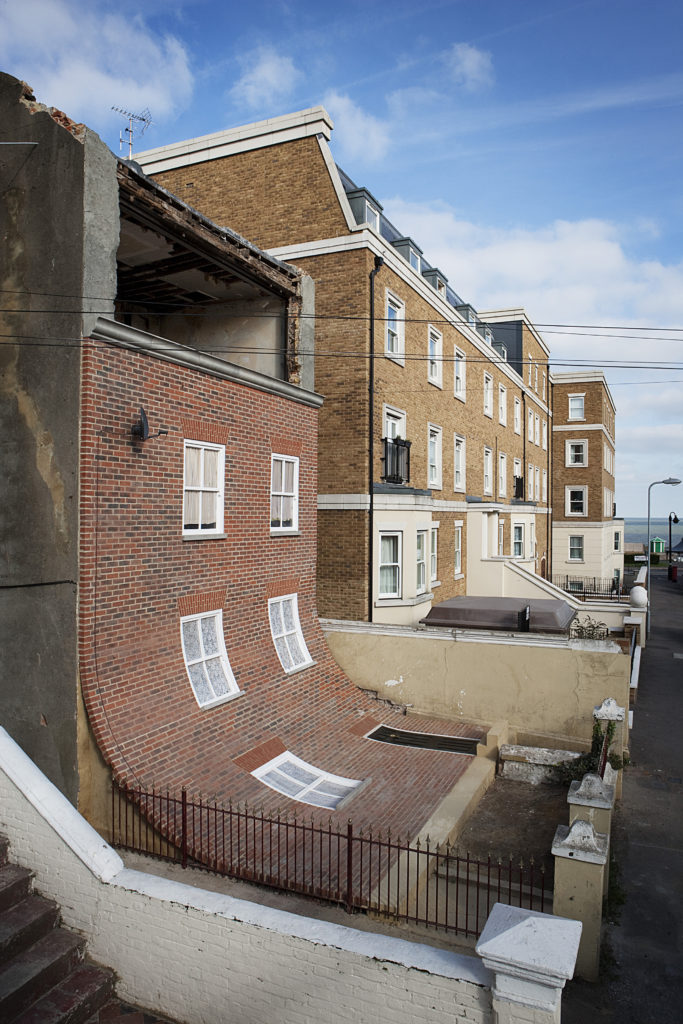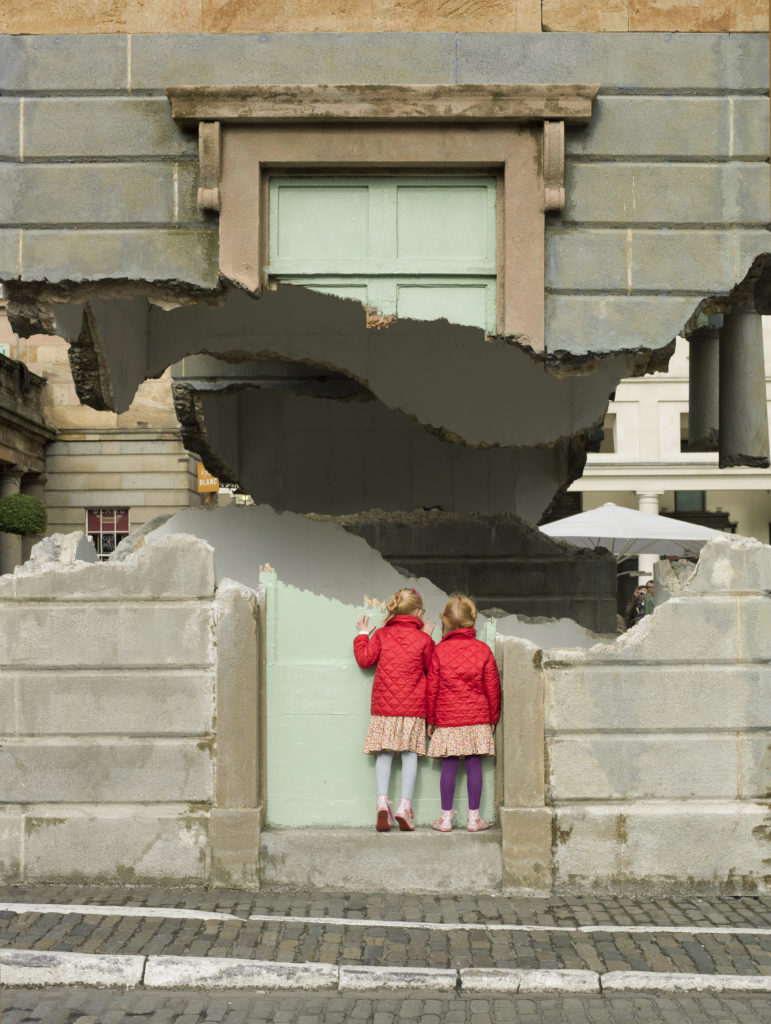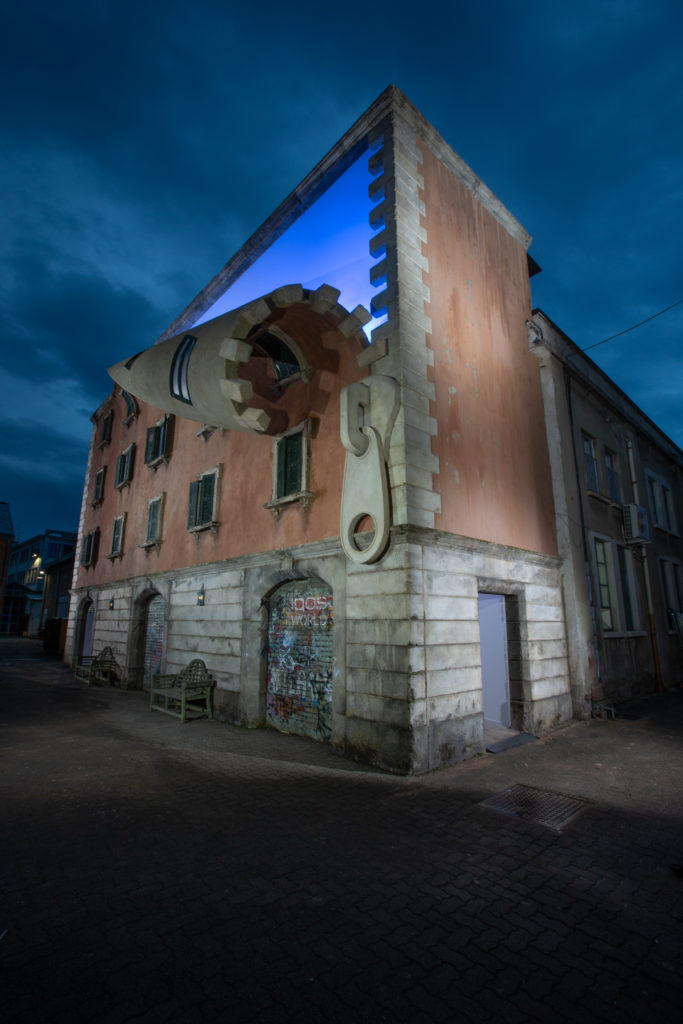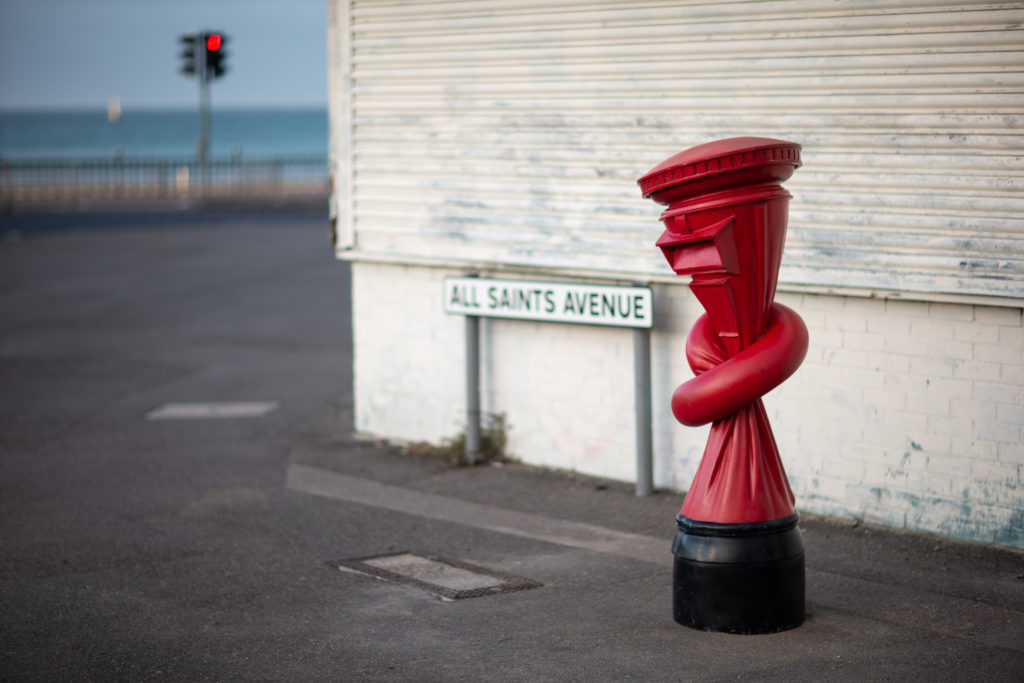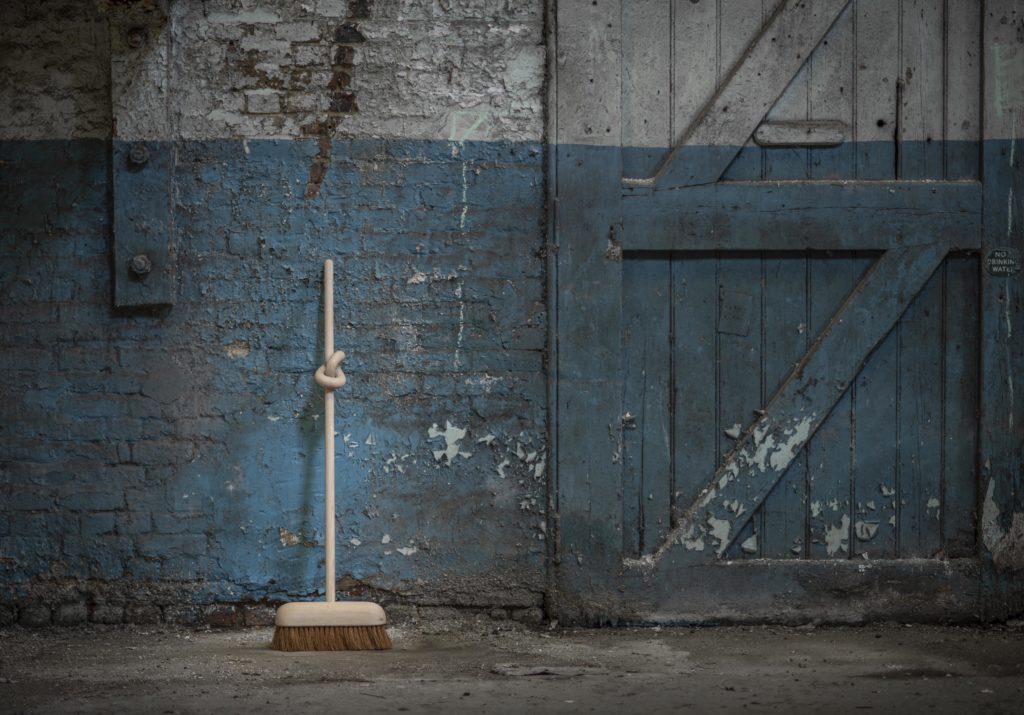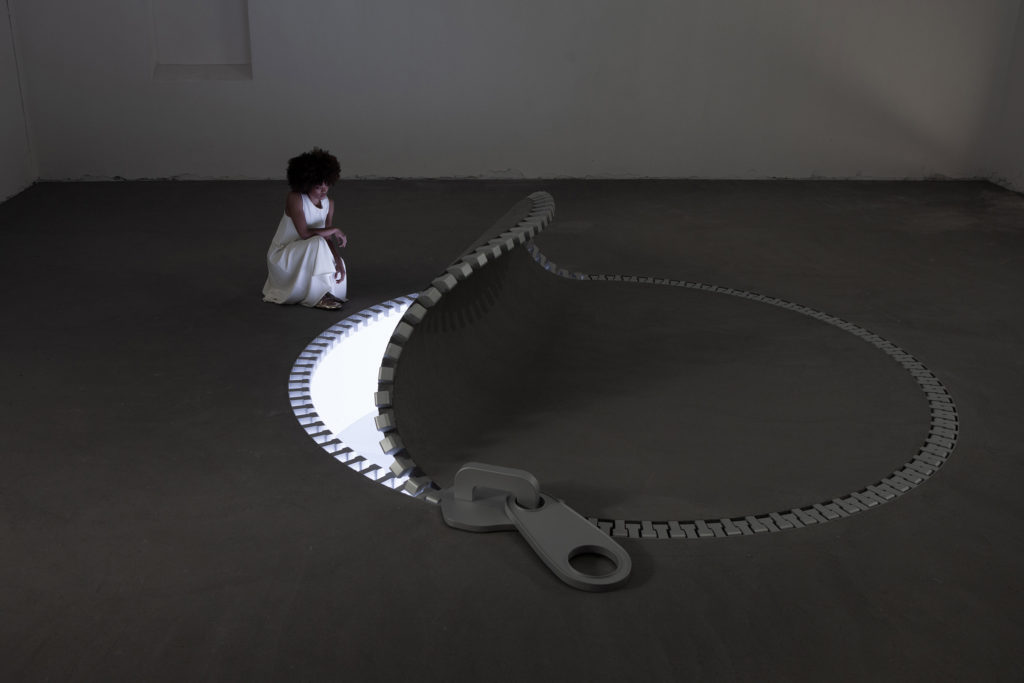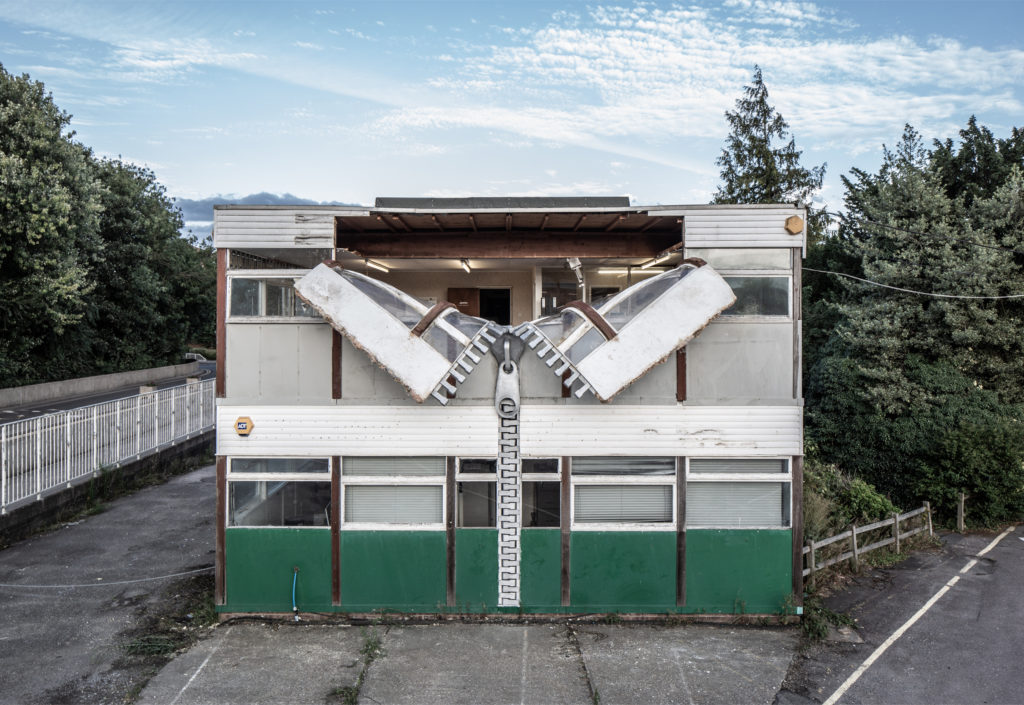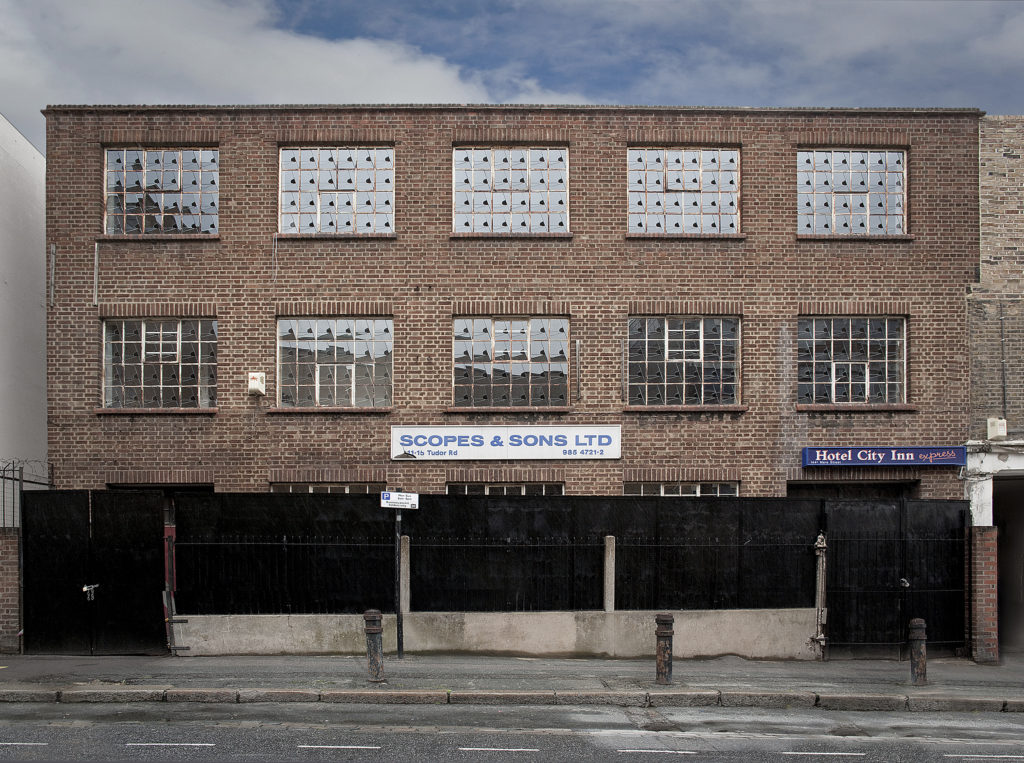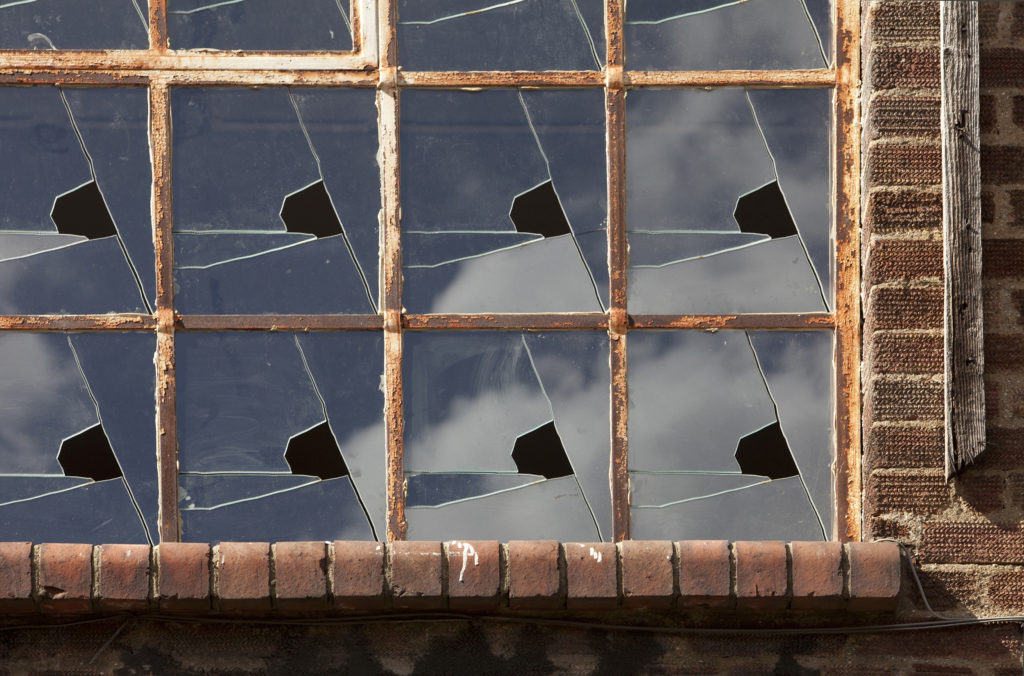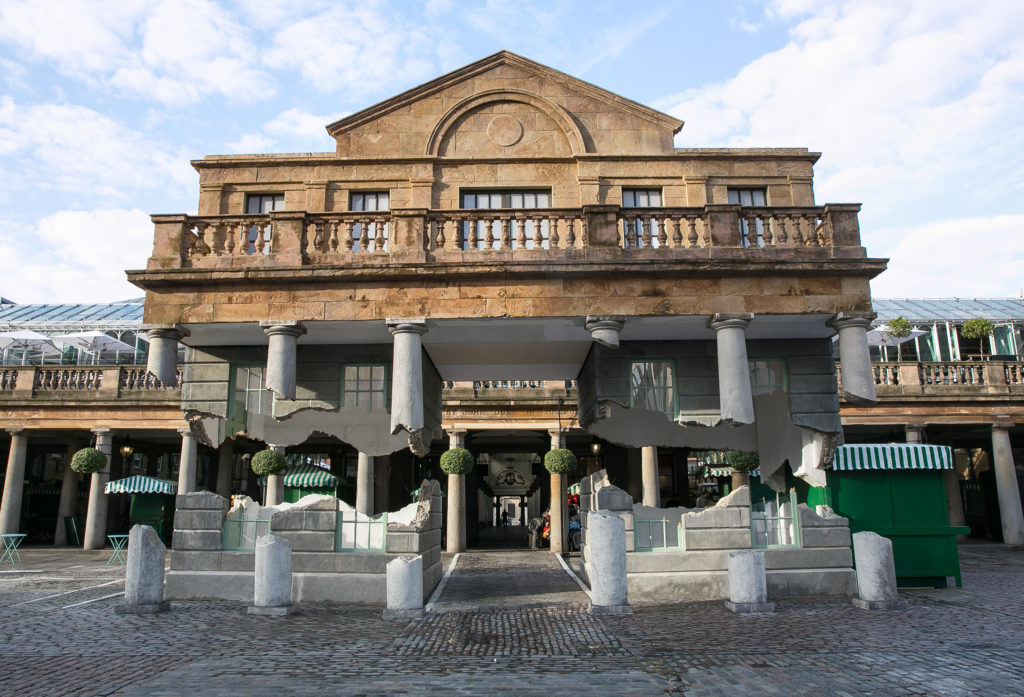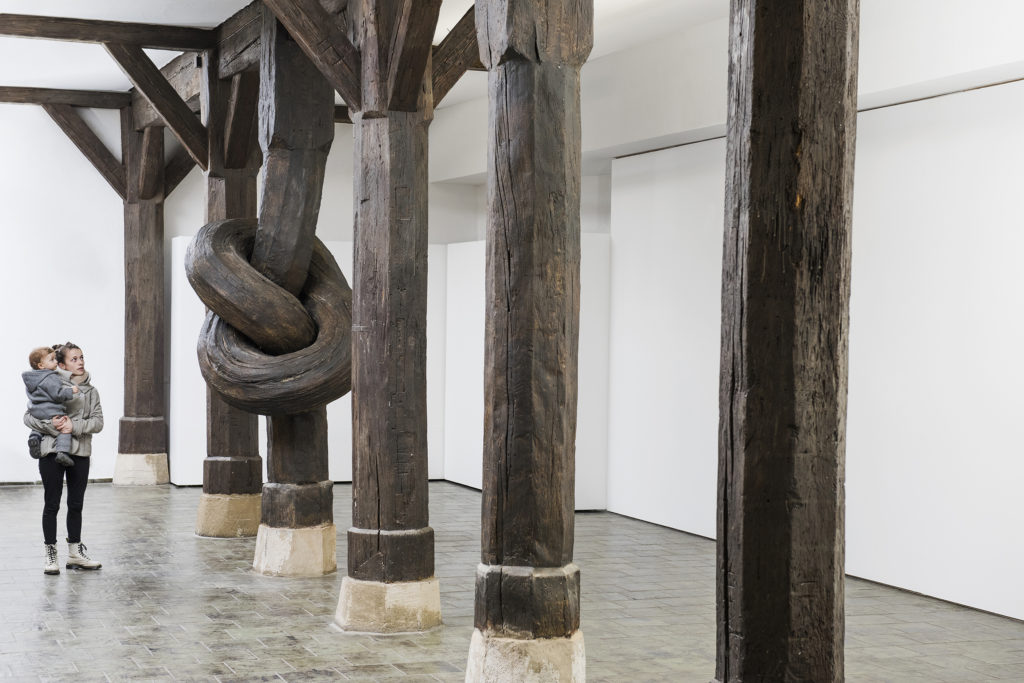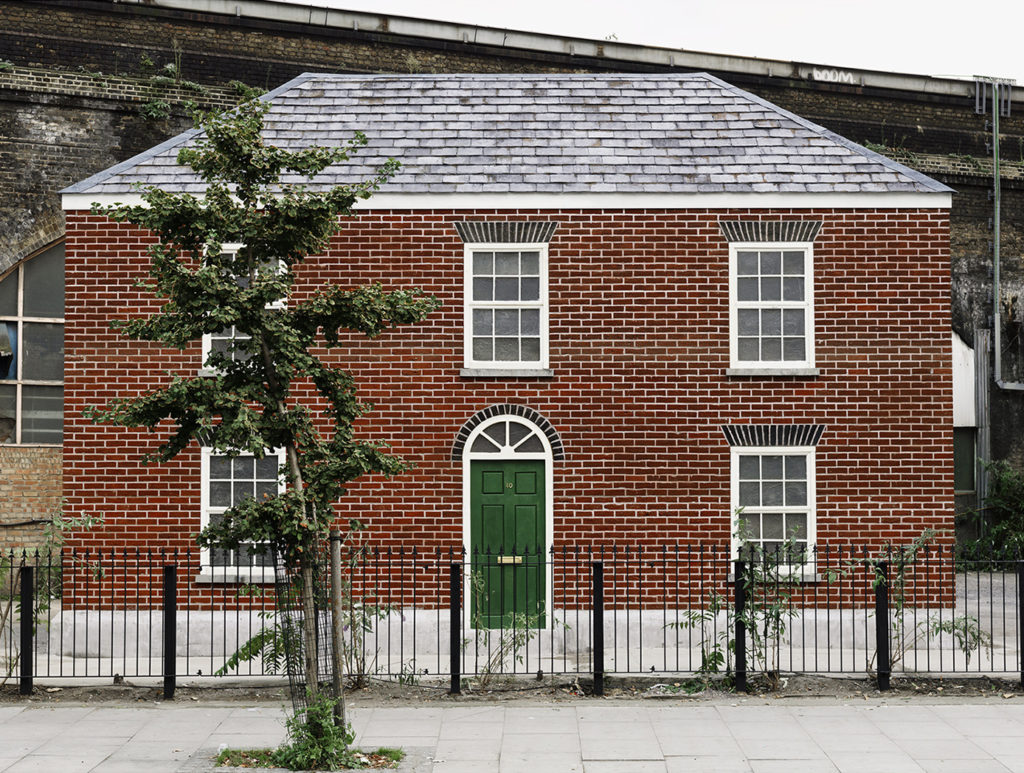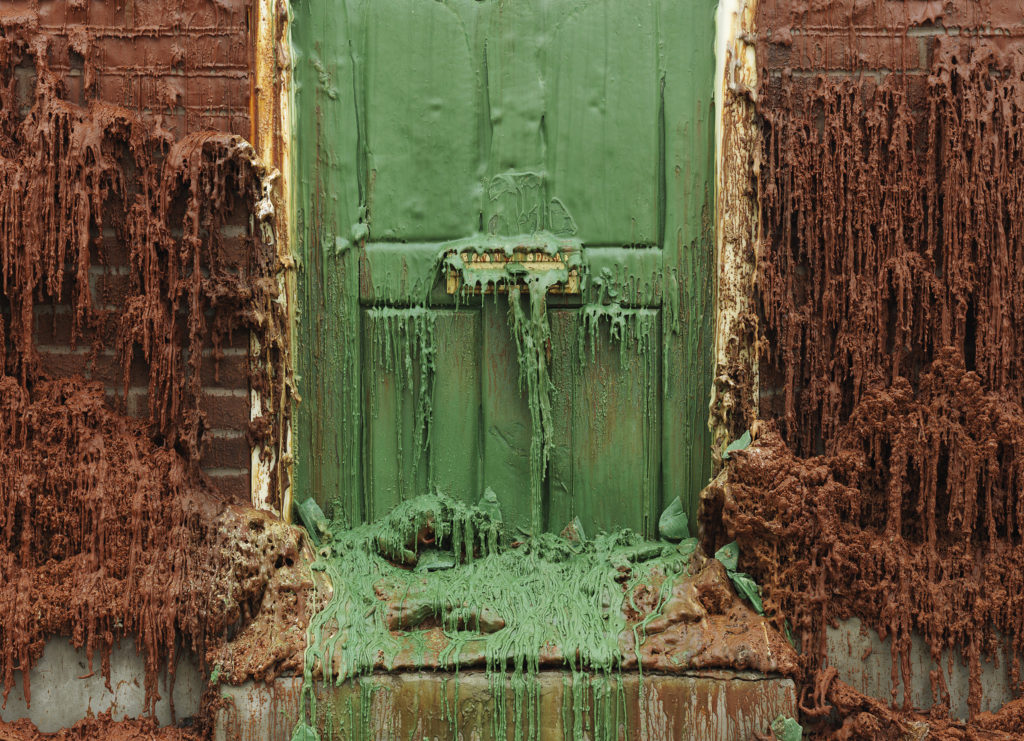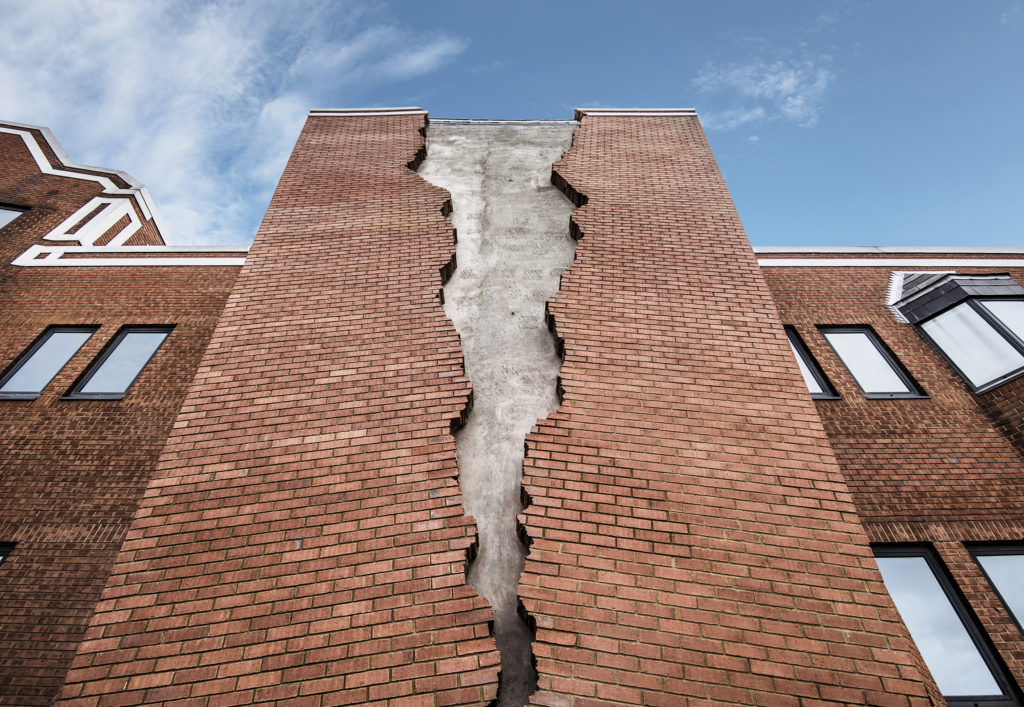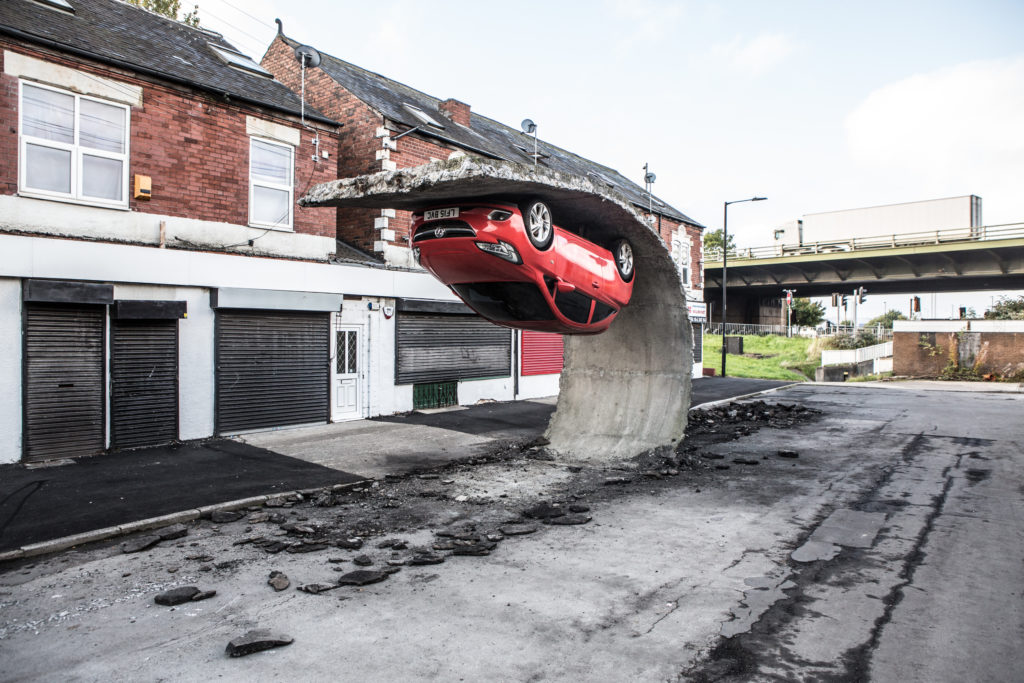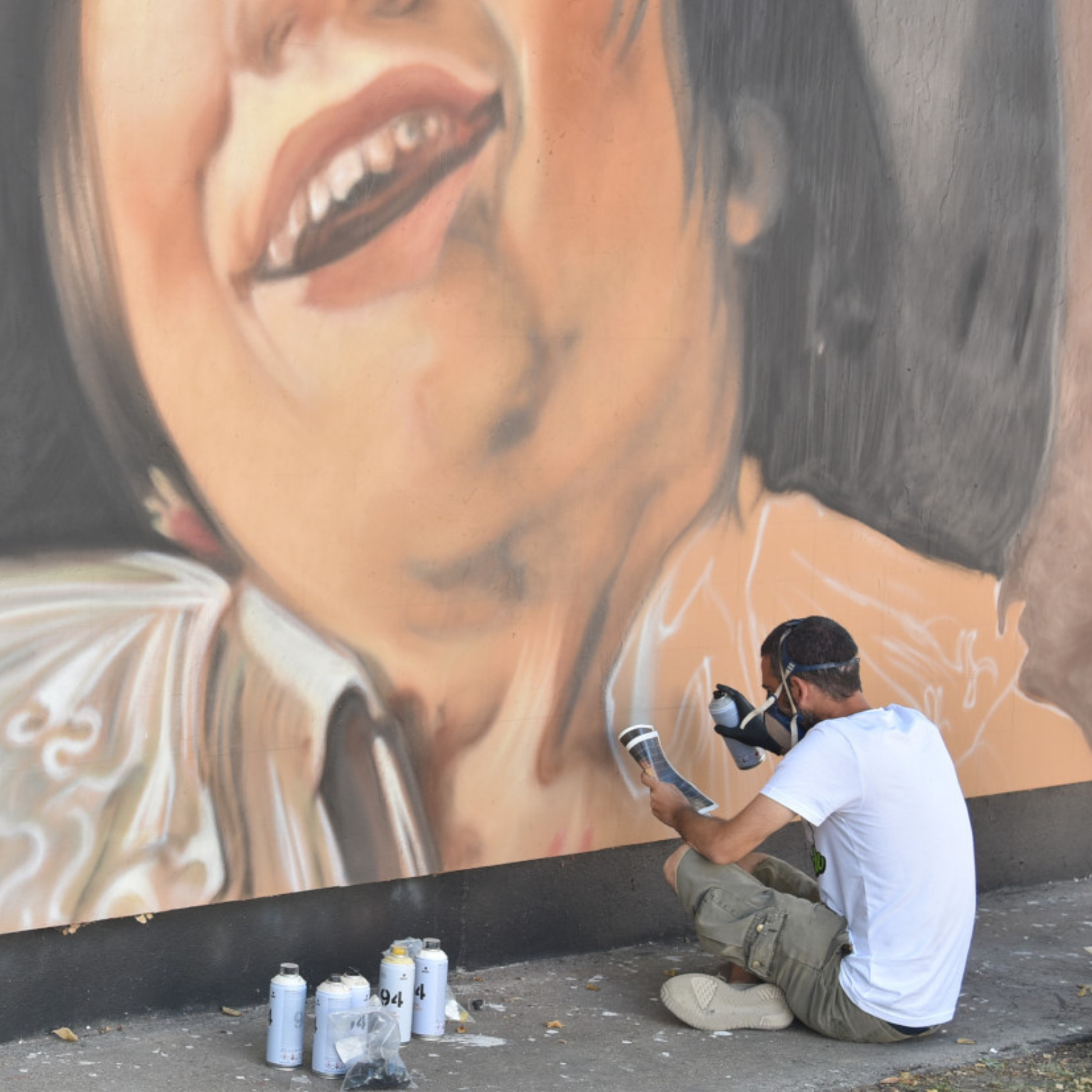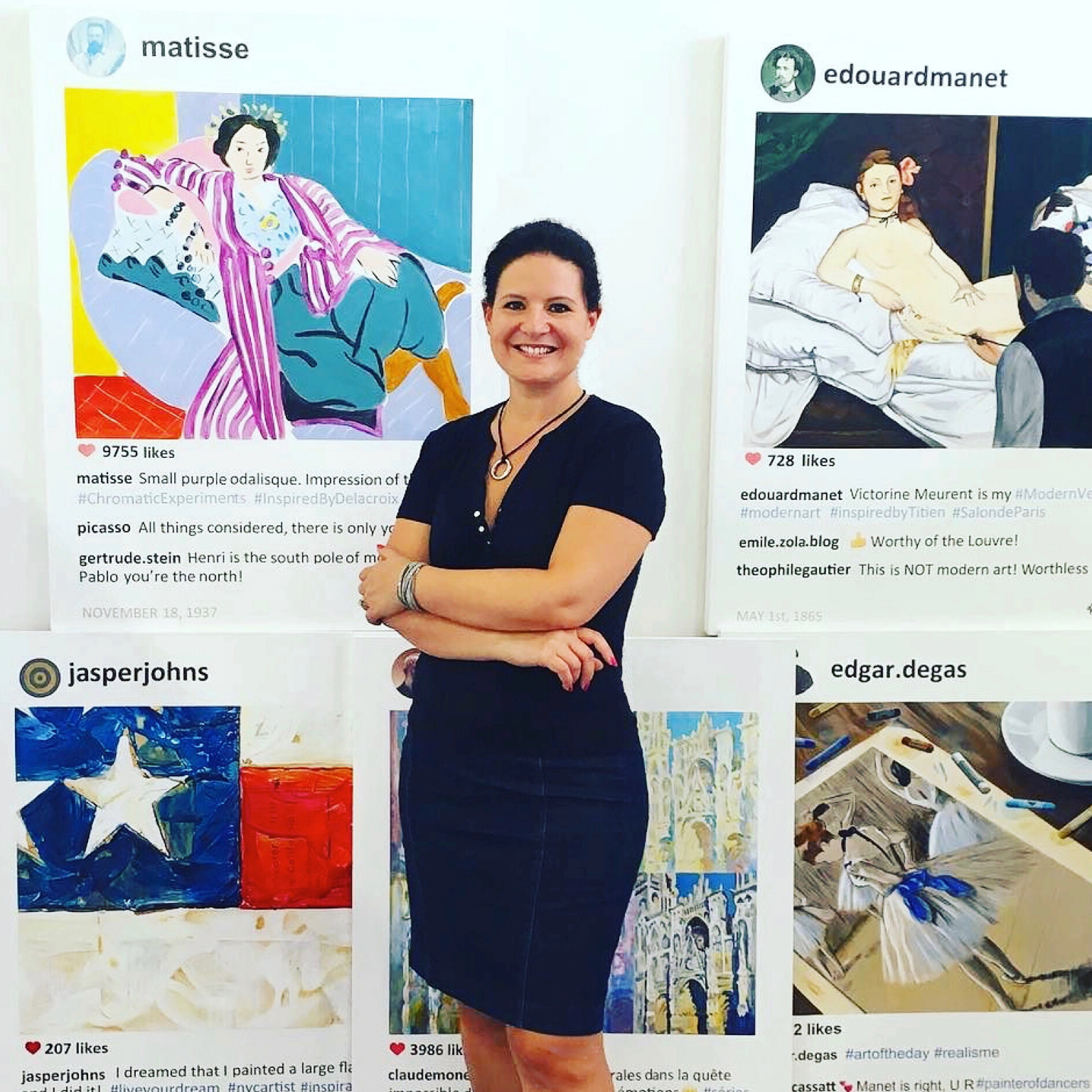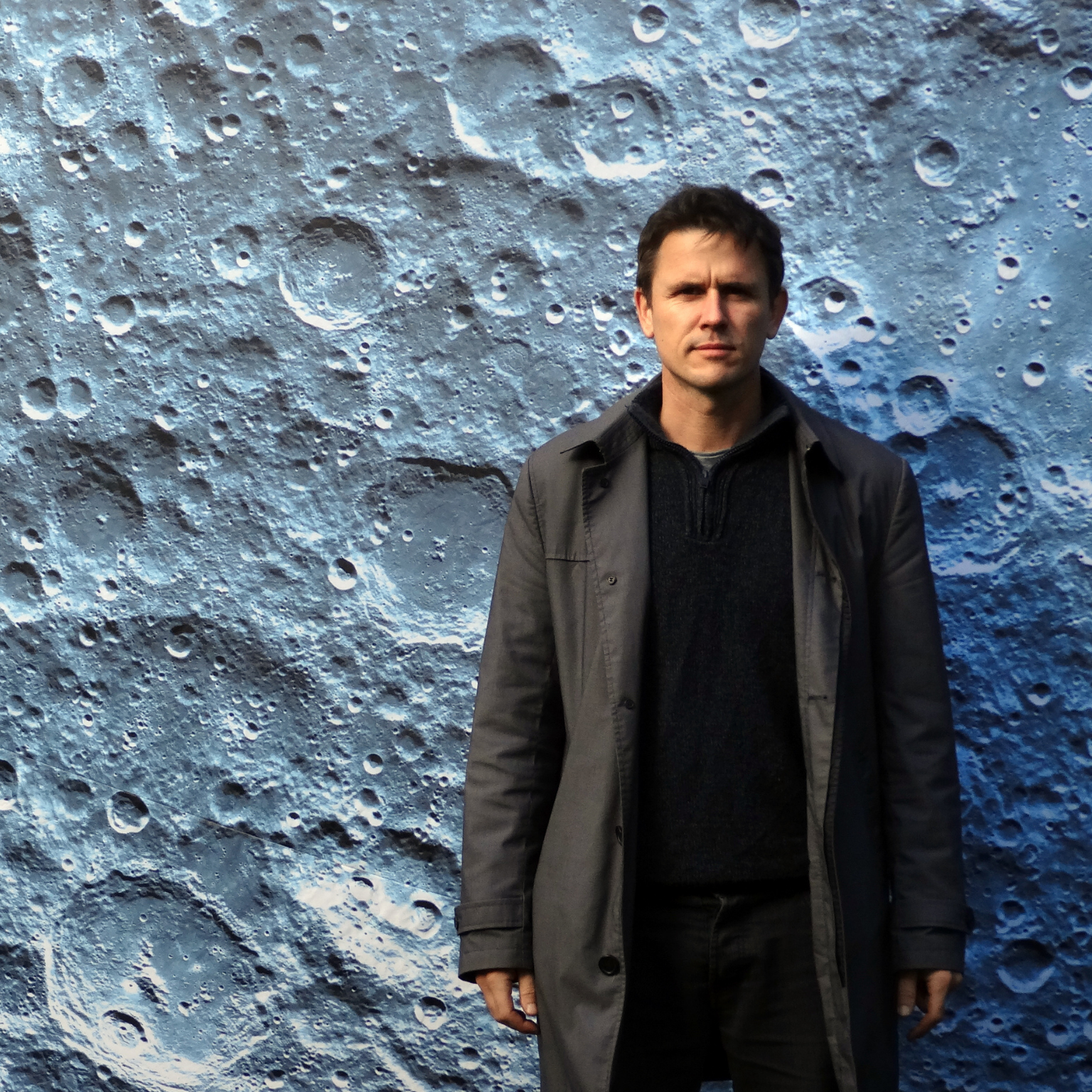Alex Chinneck, artist from Kent, United Kingdom. Pick yourself up and pull yourself together, 2017. Photo © Marc Wilmot
1.Tell us what you do and your beginnings.
My practice unites the disciplines of art, architecture and engineering to create surreal sculptures and public artworks that endeavour to make the everyday world more extraordinary.
My first public artwork involved the creation of 312 identically smashed and cracked windows using 1,248 pieces of glass for the facade of a derelict warehouse in London. Since then, we have created a succession of major public artworks across the UK and Europe.
2.What are your favorite museums in the world? Why?
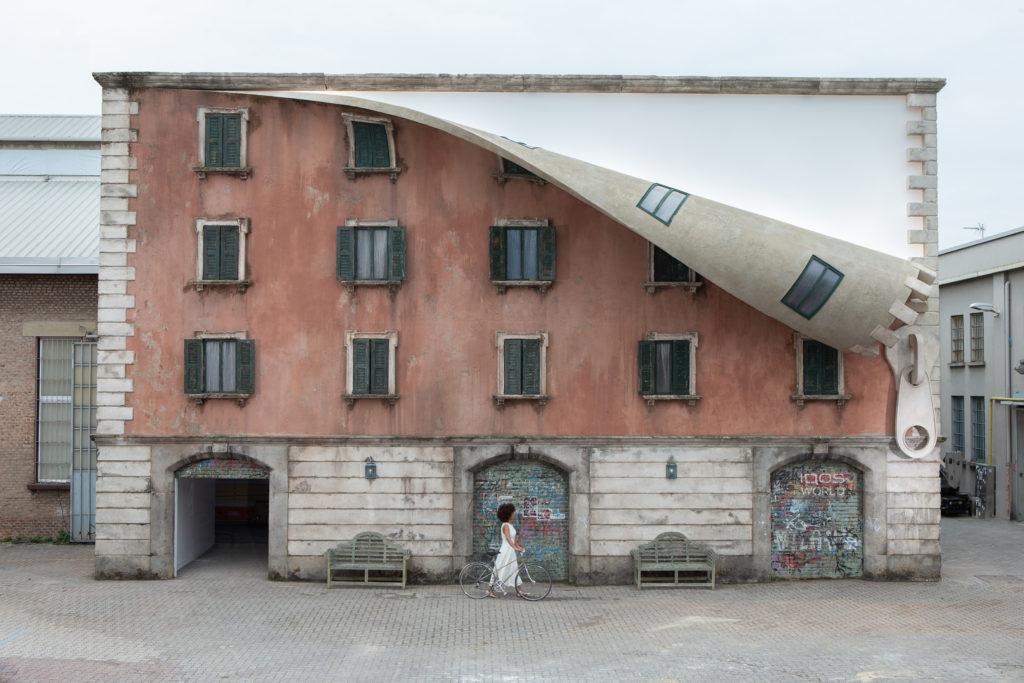
My two passions are art and antiques. For art, it’s Dia Beacon New York. The 1920’s factory architecture is so generous in size, space and light: possessing a power, calm and confidence that perfectly compliments the minimal works it displays. The Chamberlin, Serra and especially Heizer sculptures sit so comfortably there. Great American architecture meeting great American artists.
I collect antique folk art and furniture so I also want to mention the Národopisné Muzeum in Plzeň, Czech Republic. It’s full of charm, craft and beauty. Strangely, it couldn’t be more different to Dia Beacon.
3.How important are social networks in your business? And which platform do you prefer and why.
Images of my work are shared widely on social media which gives the projects considerable global reach and a long-tail-life. Even temporary installations, lasting less than a month, have reached many millions of people online and I naturally welcome that.
Despite their complexity to create, there is a conceptual lightness to the stories my sculptures tell. This is neither an accident or the product of absent critical consideration. The work walks an intentional and careful line between sculpture and stunt, and this playful simplicity spreads well in the fast-paced and highly visual world of social media. My work has a natural accessibility.
Ultimately, however, I make work to be seen and hopefully enjoyed in person and when it comes to sculpture, virtual can be great but reality is better. In an increasingly digital world, I continue to champion the physicality and materiality of sculptural practise. My studio gives increasing attention to developing immersive works to facilitate experiences that transcend what a screen alone can offer.
My unzipping building in Milan welcomed 220,000 visitors over 6 days and my hovering building in London received 1.2 million visitors over one month, so I like to think there is still a public appetite for such experiences, particularly in a post-pandemic world.
4.What are your future projects?
I am currently working on three new public art commissions for the UK that each represent exciting developments of my practise. Over the past year, I have also been developing a number of smaller sculptures for interior spaces, involving new materials, processes and collaborations. These have become an important creative outlet for me, while the pandemic has put a lot of my larger, international projects on hold.
Interview by Fabio Pariante, journalist
MORE
Alex Chinneck on social networks: Instagram – Website
Alex Chinneck (London, 1984) is an English sculptor who studied painting at Chelsea College of Arts, graduating with a Bachelor of Arts and then became a member of the Royal Society of Sculptors.
Among the most important participations, he has created large temporary public works for the London Design Festival and for the Milan Design Week. Instead, among his latest works, Chinneck created “Alphabetti Spaghetti”, a series of knotted red post houses, which ‘appeared’ at night all over England.
With each work, in addition to surprising, the artist invites the viewer to reflect: to redevelop those places and those abandoned structures with gigantic sculptures to offer a new reading of the ordinary in a fun and original way. Alex Chinneck lives and works in Kent, UK.
